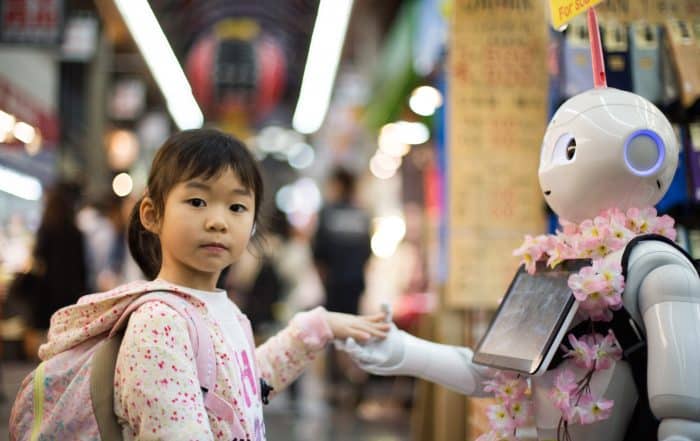Medical Data + Pizza #21– Sink your teeth into dense data science
The latest edition of Medical Data + Pizza featured two technical presentations on bringing cutting-edge AI to the bedside. Whether it was about better tracking the changes in a cancerous organ during treatment, or improving intensive care uptake during COVID-19 peaks, attending data scientists really had something to sink their teeth into.
On 15 November 2022, the 21st edition of the ‘Everything medical data science. And pizza’ series, organised by the Amsterdam Medical Data Science (AMDS) network, took place at Amsterdam UMC. By way of an introduction, moderator Tariq Dam notified attendants some dense data science was ahead – in the name of providing contrast with the previous edition, which focussed more on the larger social issues around AI, such as bias.
Into the deep end of deep learning
The first presentation, ‘Deep Learning Geometry for 3D Medical Image Registration’, came courtesy of Wenzhe Yin. He is a PhD student at the University of Amsterdam’s Video & Image Sense Lab (VIS Lab), which tries to “make sense of video and images with artificial and human intelligence”. The lab not only collaborates with corporate players including Qualcomm and TomTom, but has already produced acclaimed spin-offs such as Kepler Vision Technologies (‘Less sensors, more care’) and Ellogon.ai (‘Personalise immunotherapy’).
As an important expanding field in medical imaging, deformable image registration (DIR) is an image-processing technique used to align different images into a single integrated image – one that’s not distorted by image rotation or skewing. The technique is already used in radiation oncology to help track the effect of a treatment on a particular organ.
While deep learning approaches have widely been applied to enhance the imaging, there’s still a lot of room for improvement in terms of saving time and computing power due to the complex interaction between all the relevant variables.
And in that quest, while others must deal with challenges such as ‘get to work on time’ and ‘eat lunch’, Yin must face down ‘co-occurrence of the large deformation and small deformation in a single pair of images’ or ‘performance drop on diffeomorphic registration’.
But now his work on brain and abdominal scans is paying off. His three-levelled model PC-Reg – “a pyramidal prediction-correction approach for diffeomorphic deformable image registration” – is already performing better than established frameworks such as voxelMorph.
The trick? “Doing prediction, correction and accumulation on velocity field instead of deformation field.”
Now you know.
A heart-warming story – with equations
On one level, the presentation ‘Using AutoML to compare registry versus electronic health record data for predicting the mortality of COVID-19 patients’ told a straightforward story: about the ground-breaking power of hospitals pooling their data for the greater good.
“We had lots of help with this one,” enthuses Iacopo Vagliano, assistant professor of health data science at Amsterdam UMC. And indeed, this freshly released paper has an impressively long list of co-authors.
By using data of COVID-19 patients admitted to 19 Dutch ICUs that were included in both the national quality registry National Intensive Care Evaluation (NICE) and the Electronic Health Record (EHR)-based Dutch Data Warehouse, the study was able to show that “prognostic models built on less-granular but readily-available registry data had similar performance to models built on high-granular EHR data.”
In other words, why waste time digging for hard-to-get data, when you can more readily get insights into deciding how to best manage the admittance and treatment of an over-worked intensive care unit from a more accessible source. The key in making this happen was using AutoML: automating the machine learning design process by using 20 models – while bypassing the inefficiencies and biases associated with building your own single model.
Of course, the hope is that in the future, when more data is more freely shared, one can apply AutoML to more data-rich sources to get even better insights.
Naturally, the presentation came backed with slides full of eye-watering charts and equations. Some in the crowd nodded knowingly and asked the right questions. Others found the networking and pizza that followed much easier to swallow.
Are you a researcher looking for inspiration or exposure? You can now sign up on the new AMDS website.
Sometimes medical professionals and data scientists do not sufficiently understand or even know each other at all. Our Right Data Right Now consortium wants to change that!
At the Medical Data + Pizza meetups, we discuss everything related to medical data science, including interesting projects, papers and the latest developments. This is where physicians and data scientists meet. It’s a great opportunity to learn, meet like-minded healthcare professionals, researchers and data scientists, get feedback on your own projects and have fun.
Read the reports about previous Medical Data + Pizza Meet-ups.
The Amsterdam Medical Data Science Group meetings are supported by The Right Data Right Now consortium, which includes Amsterdam UMC, OLVG, Vrije Universiteit, Pacmed, Amsterdam Economic Board and Smart Health Amsterdam.
21 November 2022
Read more about
Contact us
Want to keep up to date?
Get the best regional news and events (in Dutch) via the Board Update newsletter
Share this news
Want to keep informed?
Follow us daily on LinkedIn and sign up for the Board Update newsletter.
Read more
- On 14 and 15 October, board members of the Amsterdam Economic Board convened for ...
- Focusing more on women in health care innovation and research will have ...
- What is the Amsterdam Metropolitan Area’s position on critical raw materials? ...




